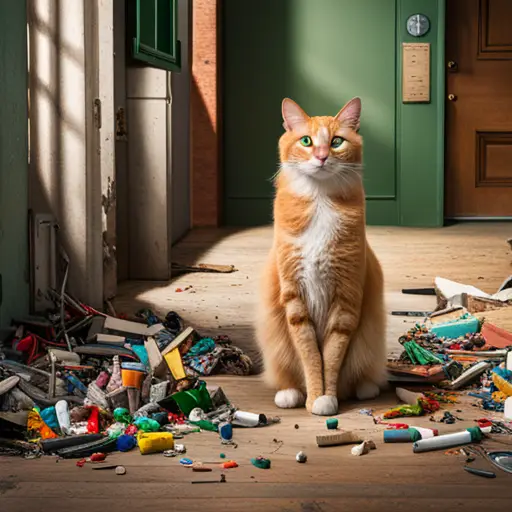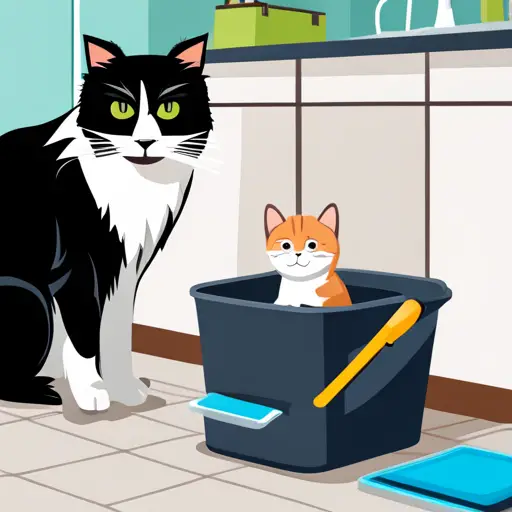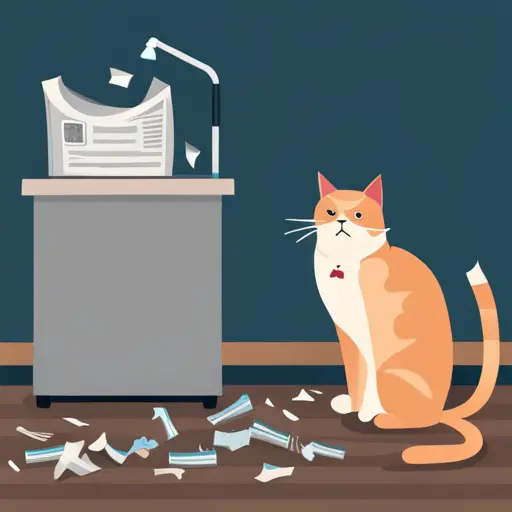Are you considering getting a cat, or have you recently adopted one? Litter box training is an essential aspect of cat ownership, but it can be daunting if you’re unfamiliar. Don’t worry; we’re here to help!
In this article, we’ll guide you through the dos and don’ts of litter box training your feline friend so that you can ensure they have a hygienic and comfortable place to do their business.
Firstly, it’s crucial to remember that cats are creatures of habit and prefer consistency. It’s essential to find the right type of litter box and litter that suits your cat’s preferences to make the training process smoother. Keeping the litter box clean is crucial to encourage your cat to use it regularly.
By following these basic guidelines, you can train your kitty to use the box and avoid any potential issues that may arise. So, let’s dive into the dos and don’ts of litter box training your cat!
Key Takeaways
- Litter box training should involve positive reinforcement and avoiding punishment for accidents.
- The location and size of the litter box are important factors to consider, including choosing a quiet and secluded area and ensuring it is easily accessible for the cat.
- Litter selection plays a significant role in the cat’s willingness to use the litter box, with options like clumping vs. non-clumping, scented vs. unscented, and natural vs. synthetic.
- Regular cleaning and maintenance of the litter box are crucial for the cat’s health and comfort, with scooping at least once a day and thorough cleaning once a week.
Choosing the Right Litter Box

You don’t want to settle for just any litter box, you need to find the one that’s perfect for your furry friend.
The first thing to consider is the size of the litter box. It should be big enough for your cat to move around and do their business comfortably. If your cat is a kitten, get a smaller litter box they can easily climb in and out of. As they grow, you can upgrade to a larger size.
Another important factor to consider is the location of the litter box. Cats prefer privacy when using the litter box, so it’s best to place it in a quiet and secluded area of your home. Avoid placing it near their food and water bowls, as cats dislike eating and drinking near their waste.
Additionally, make sure the litter box is easily accessible for your cat. They may avoid using it altogether if it’s too high or difficult to reach. By choosing the right size and location, you can ensure your cat is comfortable and happy with their litter box.
Selecting the Right Type of Litter

When choosing the appropriate litter for your feline friend, it’s important to consider their preferences and needs. The type of litter you select can greatly affect your cat’s willingness to use the litter box.
Here are some things to keep in mind when selecting the right type of litter for your cat:
- Clumping vs. non-clumping: Clumping litter is easier to clean and helps control odors, but some cats may not like the texture. Non-clumping litter is less expensive and may be more comfortable for some cats.
- Scented vs. unscented: Some cats are sensitive to strong smells, so opting for unscented litter is best. However, if you prefer scented litter, choose a mild fragrance that won’t overwhelm your cat’s senses.
- Natural vs. synthetic: Natural litter from corn, wheat, or recycled paper is eco-friendly and biodegradable. Synthetic litter, on the other hand, is typically made from clay and may not be as environmentally friendly.
- Dust-free vs. dusty: Dust-free litter is better for you and your cat’s respiratory health. However, some types of dust-free litter may be more expensive.
By considering your cat’s preferences and needs, you can choose the best type of litter for a happy and healthy litter box experience.
Cleaning the Litter Box

Maintaining a clean litter box ensures your feline friend’s health and comfort. If the litter box is left uncleaned for too long, it can result in an unpleasant odor, which can cause your cat to avoid using the litter box altogether.
Moreover, a dirty litter box can also spread bacteria and parasites, which can cause infections and illnesses in both you and your cat. Therefore, cleaning the litter box regularly and following certain guidelines to keep it fresh and hygienic is important.
When cleaning the litter box, the frequency of cleaning depends on how many cats you have and how often they use it. As a general rule, you should scoop the litter box at least once a day, replace the litter and thoroughly clean the box once a week.
However, you may need to clean the litter box more frequently if you have multiple cats. In addition to this, you can also use certain products to deal with odor, such as deodorizing sprays or baking soda. Just make sure to choose safe products for your cat that won’t irritate its sensitive nose.
By following these guidelines, you can ensure that your feline friend has a clean and comfortable litter box to use, which will keep your home smelling fresh and hygienic.
| DO’S | DON’TS |
|---|---|
| Use a litter mat to trap excess litter and prevent tracking | Use harsh chemicals or bleach to clean the litter box |
| Choose a litter box with a smooth surface for easy cleaning | Leave the litter box uncleaned for too long |
| Wash the litter box with mild soap and water | Use scented litter or litter products with strong fragrances |
…can help prevent unpleasant odors and keep your cat healthy and happy.
Understanding Your Cat’s Preferences

Learning about your feline friend’s preferences can lead to a happier and more content cat.
When it comes to litter box training, understanding your cat’s texture and location preferences is crucial. Some cats prefer finer-grained litter, while others prefer coarser textures. It’s important to experiment with different types of litter until you find the one your cat likes best.
Location preferences are also important to consider. Some cats prefer their litter box in a quiet and secluded area, while others don’t mind if it’s in a high-traffic area. Observing your cat and seeing where they naturally go to eliminate it is important. If they consistently go to a certain area, try placing the litter box there.
Litter box training is about making your cat feel comfortable and secure. By understanding their preferences, you can create a comfortable and inviting space for them to use.
Avoiding Common Mistakes

To ensure a successful and stress-free experience, avoiding common mistakes during the litter box process is essential. Here are some things to avoid:
- Don’t punish your cat for accidents outside of the litter box. This can create fear and anxiety, making it even harder for your cat to use the litter box properly. Instead, focus on positive reinforcement when your cat does use the litter box correctly.
- Don’t place the litter box in a high-traffic area or near your cat’s food and water bowls. Cats prefer privacy when using the litter box, so find a quiet and secluded location.
- Don’t use scented litter or harsh cleaning products. Cats have a sensitive sense of smell, and strong scents can deter them from using the litter box. Stick to unscented litter and gentle cleaning products.
- Don’t neglect to clean the litter box regularly. Cats are clean animals and prefer a clean litter box. Aim to clean the litter box at least once daily, and consider using a litter box liner for easy cleanup.
Avoiding these common mistakes can help your cat feel comfortable and confident using the litter box. Remember to use positive reinforcement and find a suitable location for the litter box to ensure a successful outcome.
Conclusion
Congratulations on successfully litter box training your cat! Following the dos and avoiding don’ts creates a comfortable and hygienic environment for your feline friend.
Remember to choose the right litter box that fits your cat’s size and needs, and select the appropriate type of litter that suits your cat’s preferences and your cleaning routine.
Cleaning the litter box regularly is key to maintaining a healthy and odor-free environment for your cat. By understanding your cat’s preferences and habits, you can prevent common mistakes such as overcrowding the litter box or placing it in a noisy or high-traffic area.
Keep up the good work, and enjoy the benefits of a happy and well-trained cat!
